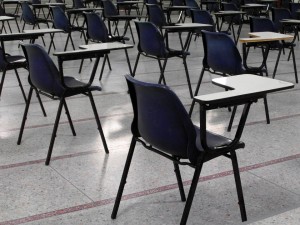Charter school promoters are making vastly exaggerated claims about students “trapped on waiting lists” in their campaign to lift the cap on charter schools, a Citizens for Public Schools analysis shows.
Charter school promoters say the waitlists show high demand for charter seats that cannot be met without lifting the caps on how much public funding can be diverted from district schools to charter schools.
But a CPS analysis of state data suggests the number affected by the cap is less than 15,000, probably thousands less. The state Department of Elementary and Secondary Education’s (DESE) confusing and opaque reporting system makes it impossible to be precise, but CPS found:
- The waitlist count includes schools that are not Commonwealth charter schools and would not be affected if the cap were lifted.
- Of the students on waitlists for Commonwealth charter schools, many were taken from old lists, rolled over from past years with permission from the state Department of Elementary and Secondary Education (DESE), even after state Auditor Suzanne Bump warned DESE against this practice.
- For most of the students on waitlists, the charter cap has nothing to do with why they were not offered seats. Lifting the cap would not affect them.
The CPS analysis comes in response to DESE’s most recent waitlist report, issued Feb. 18, 2016, which said 34,000 students were on charter waitlists. Proponents of charter school expansion cite this number in arguing for lifting the cap. They have filed legislation and proposed a ballot question to overturn the current limits on charter funding.
Not only does the case for lifting the cap rest on spurious numbers, but a 2013 study commissioned by the pro-charter Boston Foundation suggests that being on a waitlist does not necessarily mean students want to go to charter schools. They may just be keeping their options open. The study found that nearly half of the students offered seats at Boston Commonwealth charter schools through lotteries turned down the offer. The researchers also noted that “the odds of receiving a charter offer are roughly comparable to the chances of receiving a first-choice assignment in [a Boston district school].”
This year, the number of Boston students on district school waitlists is comparable to the number on Commonwealth charter school waitlists.
“Whatever the true number of students affected by the cap, this must be weighed against the tens of thousands of students who choose to attend district schools, only to have them closed or have their art or music or science or other valuable programs curtailed while public tax money is diverted to charter schools,” said CPS Executive Director Lisa Guisbond.
“We have, unfortunately, many waitlists in Massachusetts. Roughly 17,000 are on waitlists for pre-school. There is solid research showing that quality pre-school can shrink achievement gaps,” Guisbond added. “Why don’t we have a ballot question bankrolled by $18 million from wealthy financiers to cut that waitlist?”
The CPS analysis is posted here.


